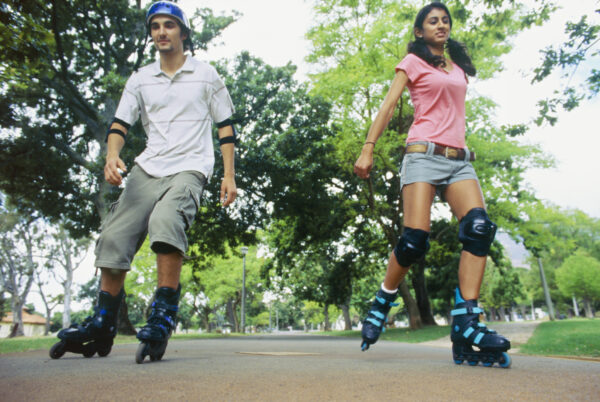Introduction:
Rollerblading, often referred to as inline skating, has evolved from a simple recreational pastime into a dynamic athletic pursuit embraced by people of all ages worldwide. This article delves into the history, technology, health benefits, and cultural impact of rollerblading, exploring how this activity has transformed from a leisurely activity to a competitive sport and a means of transportation.
History of Rollerblading:
Early Beginnings:
The roots of rollerblading can be traced back to the 18th century when a Belgian inventor named John Joseph Merlin created the first inline skate prototype. However, it wasn’t until the 20th century that inline skating gained popularity, with the introduction of the Roller Derby skate in the 1930s. These early skates featured metal wheels and rudimentary designs, limiting their appeal to a niche audience.
Innovation in the 1980s:
The 1980s marked a significant turning point for rollerblading, thanks to the invention of the modern inline skate by Scott and Brennan Olson. Their creation featured polyurethane wheels and a sleeker design, offering improved maneuverability and comfort. This innovation sparked a surge in interest, propelling rollerblading into the mainstream.
Popularity and Cultural Impact:
Rise to Prominence:
Throughout the 1990s, rollerblading experienced a boom in popularity, becoming synonymous with youth culture and urban lifestyle. Movies like “Airborne” and “Brink!” portrayed rollerblading as a thrilling and rebellious activity, further fueling its appeal among teenagers and young adults. Rollerblading also found its way into music videos, fashion trends, and advertising campaigns, solidifying its status as a cultural phenomenon.
Competitive Rollerblading:
Emergence of Competitive Scene:
As rollerblading gained traction, it evolved beyond a casual hobby into a competitive sport. Skate parks and competitions emerged, showcasing the skills of professional inline skaters who pushed the boundaries of what was possible on wheels. Freestyle skating, aggressive inline, and speed skating became popular disciplines, each requiring a unique blend of athleticism, creativity, and technical mastery.
Health Benefits of Rollerblading:
Physical Fitness:
Beyond its cultural and recreational aspects, rollerblading offers numerous health benefits. It provides a full-body workout, engaging muscles in the legs, core, and arms while improving cardiovascular fitness and balance. Rollerblading is also low-impact, reducing the risk of injury compared to high-impact activities like running. Additionally, it promotes mental well-being by relieving stress and boosting mood through the release of endorphins.
Technological Advancements:
Enhancements in Equipment:
In recent years, technological advancements have further enhanced the rollerblading experience. Innovations such as specialized frames, high-performance bearings, and lightweight materials have improved speed, agility, and durability. Adjustable cuffs and customizable liners allow for a personalized fit, enhancing comfort and control on the skates. Furthermore, advancements in wheel design and urethane compounds have optimized grip, speed, and responsiveness, catering to the diverse needs of skaters.
Rollerblading as Transportation:
Practicality and Sustainability:
Beyond its recreational and athletic aspects, it serves as a practical and eco-friendly mode of transportation. Many urban dwellers embrace inline skating as a means of commuting, navigating city streets with ease and efficiency. Rollerblades offer a faster alternative to walking and biking, allowing commuters to cover longer distances in less time. Moreover, it reduces carbon emissions and traffic congestion, contributing to a cleaner and more sustainable urban environment.
Conclusion:
Rollerblading has come a long way since its humble beginnings, evolving from a simple recreational activity to a multifaceted pursuit encompassing sports, fitness, culture, and transportation. Its enduring popularity and diverse appeal testify to the enduring allure of gliding on wheels. Whether cruising through city streets, performing tricks at the skate park, or competing on the world stage, rollerbladers continue to push boundaries and defy gravity, embodying the spirit of freedom, creativity, and adventure.
